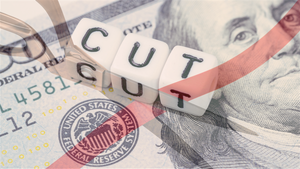
Lift truck and material handling solutions manufacturer Hyster-Yale Materials Handling (NYSE: HY) beat Wall Street’s revenue expectations in Q2 CY2025, but sales fell by 18.1% year on year to $956.6 million. Its non-GAAP loss of $0.79 per share was significantly below analysts’ consensus estimates.
Is now the time to buy HY? Find out in our full research report (it’s free).
Hyster-Yale Materials Handling (HY) Q2 CY2025 Highlights:
- Revenue: $956.6 million vs analyst estimates of $936.9 million (18.1% year-on-year decline, 2.1% beat)
- Adjusted EPS: -$0.79 vs analyst estimates of $0.60 (significant miss)
- Adjusted EBITDA: $21.4 million vs analyst estimates of $35.25 million (2.2% margin, 39.3% miss)
- Operating Margin: 0.6%, down from 8.2% in the same quarter last year
- Market Capitalization: $646.1 million
StockStory’s Take
Hyster-Yale Materials Handling’s second quarter was marked by operational and market headwinds, as the company reported an 18.1% year-over-year revenue decline and a significant miss on non-GAAP earnings per share. The market responded negatively, with management citing persistent economic uncertainty and fluctuating tariffs as central challenges. CEO Rajiv Prasad noted, “Fluctuating tariff levels impacting demand and cost structures require us to maintain nimble and responsive.” Order activity slowed, especially as customers delayed capital purchases amid tariff-driven cost uncertainty and softer demand in both Europe and the Americas. The company’s decision not to retroactively raise prices on existing orders, though aimed at maintaining customer trust, contributed to a temporary lag in cost recovery and pressured near-term profitability.
Looking ahead, Hyster-Yale’s guidance is shaped by persistent tariff headwinds and an uncertain demand environment. Management plans to increase production rates in the second half if bookings improve, but remains cautious, with CFO Scott Minder stating, “Tariff rate volatility creates uncertainty and makes it difficult to provide a precise impact estimate at this time.” The company is prioritizing pricing discipline, production flexibility, and manufacturing efficiency, but expects operating profit for the year to be below prior levels. Ongoing investments in modular product platforms and regional manufacturing are intended to reduce costs and support long-term growth, though management acknowledges the recovery will depend heavily on macroeconomic stabilization and the resolution of tariff uncertainties.
Key Insights from Management’s Remarks
Management attributed the quarter’s performance to a combination of lower industry demand, tariff-driven cost increases, and a shift in sales mix toward lower-margin products. Strategic efforts to protect margins and customer relationships were also highlighted.
- Tariff impact on costs: Material and freight expenses rose due to higher tariffs, with management noting these headwinds created a temporary lag in cost recovery given the decision not to retroactively raise prices on existing orders.
- Demand softness in key regions: The quarter saw weaker booking activity in both Europe and the Americas, as customers delayed purchases amid economic uncertainty and tariff volatility. CEO Rajiv Prasad emphasized, “The hesitancy to commit to large purchases, especially in our customer base…led to a temporary Lift Truck order slowdown.”
- Sales mix shift: There was a notable move toward lower-value Class 3 products, while higher-value Class 4 and 5 trucks faced declining volumes. In EMEA, lower sales of Class 1 electric products contributed to the revenue decline.
- Strategic pricing actions: The company implemented monthly price adjustments tied to actual product costs, aiming to better match pricing to cost changes from tariffs. However, this strategy has a lagging effect due to existing order backlog.
- Bolzoni business realignment: Revenue at Bolzoni declined due to the planned phaseout of lower-margin legacy products, a move intended to focus on higher-value offerings and improve long-term profitability. Management expects this transition to complete by 2027, with some delays attributed to tariff-related complexities.
Drivers of Future Performance
Management’s outlook for the coming quarters centers on navigating tariff uncertainty, aligning production with demand, and driving operational efficiency to defend margins.
- Tariff volatility remains central risk: The company expects tariffs to continue exerting pressure on material costs and margins, with mitigation efforts such as global sourcing and monthly price adjustments only partially offsetting the impact. Management cautions that the financial effect of tariffs is difficult to estimate given ongoing changes in trade policy.
- Flexible production and backlog management: Hyster-Yale plans to scale production based on real-time bookings and market signals, increasing output if demand rebounds in the second half. However, if bookings remain weak, production will be dialed back to avoid excess inventory and preserve cash.
- Investment in operational efficiency and product innovation: Ongoing capital projects focus on modular vehicle design and regional manufacturing, which are intended to reduce the company’s breakeven point and support future growth. Management projects annualized cost savings from these initiatives could reach $30-$40 million by 2027, though near-term benefits are expected to be offset by lower production volumes.
Catalysts in Upcoming Quarters
Looking forward, the StockStory team will be monitoring (1) the pace and effectiveness of tariff mitigation strategies, particularly monthly price adjustments and supply chain shifts; (2) trends in order bookings and backlog stability as market uncertainty persists; and (3) progress on manufacturing efficiency initiatives and the planned transition to higher-value product offerings. Developments in the global economic environment and competitor actions—especially from Chinese manufacturers—will also be important to track.
Hyster-Yale Materials Handling currently trades at $36.46, down from $42.32 just before the earnings. Is there an opportunity in the stock?See for yourself in our full research report (it’s free).
Stocks That Trumped Tariffs
Trump’s April 2025 tariff bombshell triggered a massive market selloff, but stocks have since staged an impressive recovery, leaving those who panic sold on the sidelines.
Take advantage of the rebound by checking out our Top 5 Strong Momentum Stocks for this week. This is a curated list of our High Quality stocks that have generated a market-beating return of 183% over the last five years (as of March 31st 2025).
Stocks that made our list in 2020 include now familiar names such as Nvidia (+1,545% between March 2020 and March 2025) as well as under-the-radar businesses like the once-micro-cap company Tecnoglass (+1,754% five-year return). Find your next big winner with StockStory today.
StockStory is growing and hiring equity analyst and marketing roles. Are you a 0 to 1 builder passionate about the markets and AI? See the open roles here.






